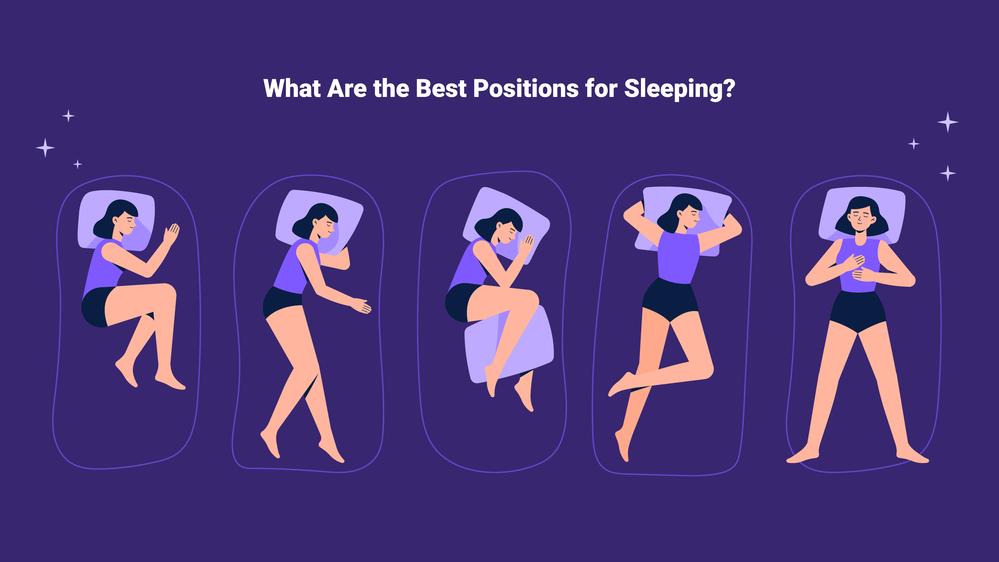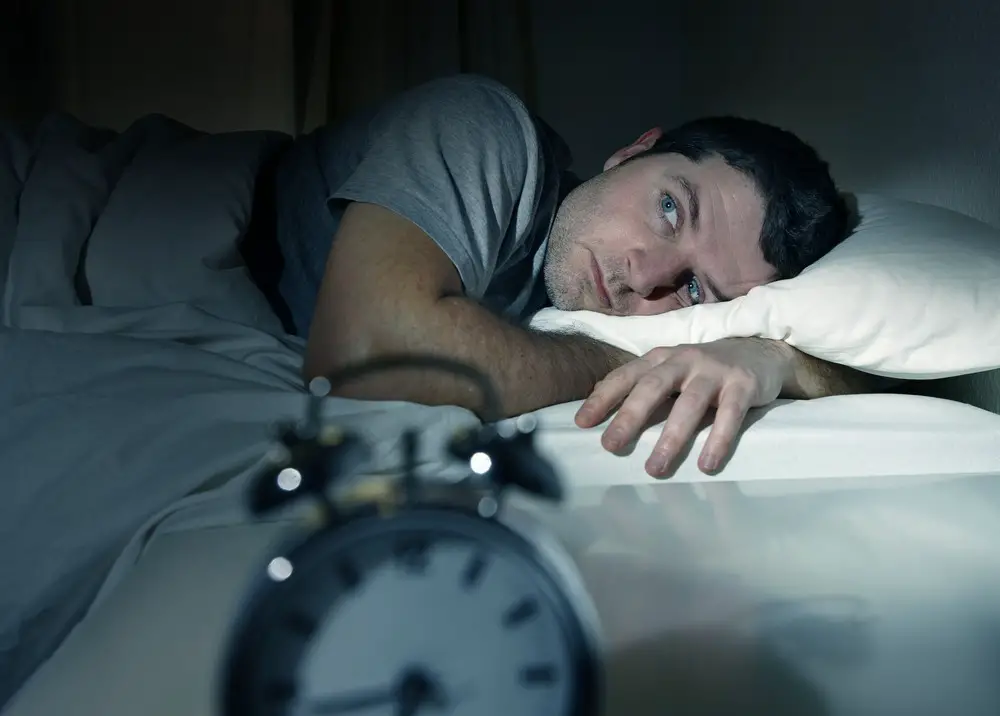As a BetterHelp affiliate, we receive compensation from BetterHelp if you purchase products or services through the links provided
Our bodies need sleep for their physical and mental recovery. However, if you are not sleeping in a good position, you may not get good sleep quality.
According to the Sleep Foundation, we spend one-third of our lives sleeping or resting. However, it’s not unusual for people to wake up with aches and pains in the back, neck, shoulders, hips, etc., because of how they sleep.
What is the best position to sleep? The Sleep Foundation reiterates that there is no best position because that depends on each person’s needs and health. However, supporting the spine curvature remains important during sleep, meaning keeping it aligned with the head and hips is essential.
Does this mean you can only sleep on your back? No, read on to find out more about the best sleeping positions.
Optimal Sleeping Position
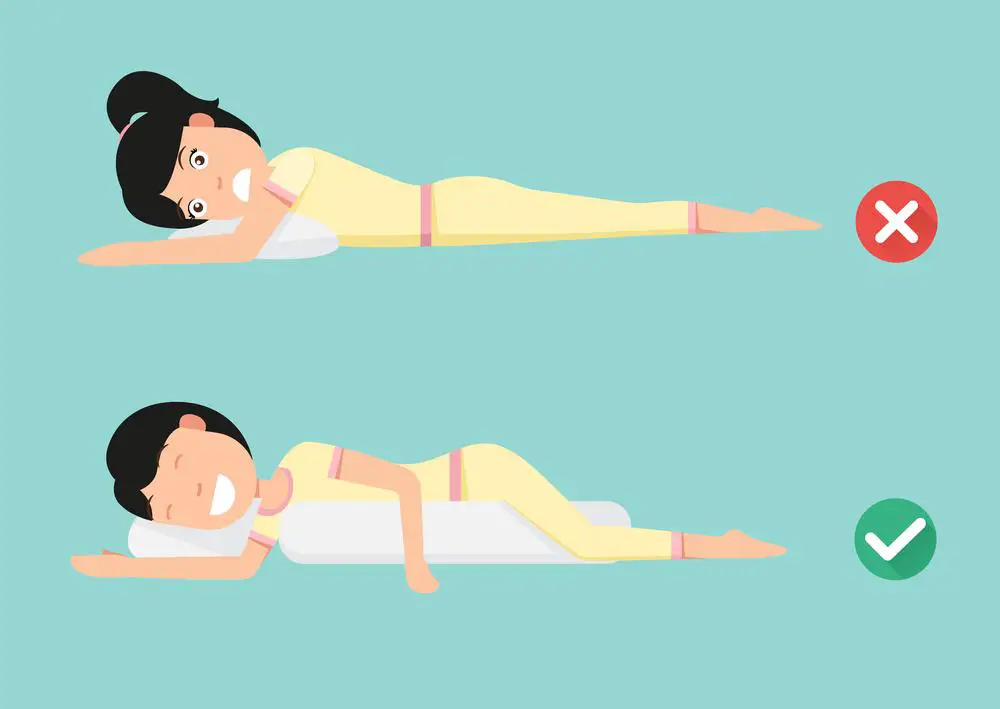
Since it’s vital to promote healthy spinal alignment during sleep (it must maintain a straight line with your hips and head), the optimal position depends on your health and comfort.
The healthiest sleeping positions are the back or side. Unlike sleeping on the stomach, these positions support and balance the spine, help relieve spinal pressure, and help with muscle relaxation and recovery. Therefore, as you can see, the best position to sleep is not on the stomach (prone position).
Sleeping on the stomach may help with snoring, but professionals advise against it. It’s not a good position to sleep in because it places pressure on spinal tissue, and the strain can lead to spinal changes. For people with spinal injuries, the prone position may delay recovery. However, only about 7% of people sleep in this position.
The health benefits of different sleeping positions mean that they are not one size fits all. Studies have shown that sleeping on the side or back relieves back pain, while pregnant women sleep better on their side or in the fetal position (on the side with the legs curled toward the body).
For those suffering from acid reflux, when sleeping on the left side seems more effective than resting on their back or right side. You can sleep on your stomach to relieve snoring or sleep apnea, but the side and fetal positions will also work.
If you need to change your sleep position, remember it may take some time to adjust to a new one, but it is possible. On the other hand, if you don’t want to change, don’t feel forced; make the necessary adjustments by choosing the correct mattress and pillows. For example, if you sleep prone, place a thinner pillow under your head and another on your pelvis to support the spine.
Generally, pillows are great for taking pressure off the spine in whatever position you sleep, so use them under the knees to relieve back or hip pain when sleeping on your back, place the pillow between your knees for lower back pain when sleeping on your side, or prop up your head when sleeping on your back to relieve sinus congestion.
Left or Right? Best Side to Sleep On
The Sleep Foundation says sleeping on the side is the most popular sleep position since it’s the preferred one by over 60% of people. Interestingly, more men than women like it.
Children don’t have position preferences since they move into different positions equally at night. However, the spine’s flexibility decreases with time, meaning sleeping on our side is more comfortable as we age.
However, is the best position to sleep on your left or right side? The benefits of sleeping on your side include the correct spine alignment to prevent back pain. It also reduces heartburn and snoring.
Side sleeping benefits the following groups:
Pregnant Women
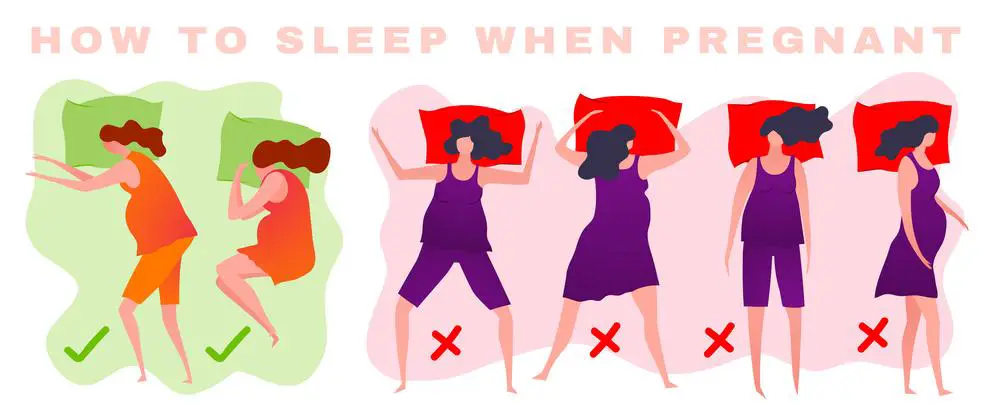
Sleeping on the side is the best sleeping position for pregnant women who should also bend their knees in this position. Side sleeping relieves the pressure caused by the expansion of the stomach. It also makes it easier for the heart to pump, and it enables the flow of blood. Sleeping on the left side is better for facilitating blood flow throughout the body and fetus, but moving to the right now and then to relieve the left hip from pressure is fine.
Pregnant women should also use pillows to relieve pressure when sleeping on their side. The correct spots to place pillows are under their tummy, a wedge pillow at the small of their back, and between the legs. Body pillows are excellent for providing alignment at this time.
People with Acid Reflux
Sufferers of gastroesophageal reflux disease (GERD) benefit most from sleeping on the left side. Issues of GERD at night include heartburn, chest pain, and coughing caused by stomach acid. Besides sleeping on the left side, sufferers can prop up the top of their bed by at least 6 inches. To be more effective, sufferers use an extra pillow and prop up their bed at the top by at least 6 inches with an adjustable bed frame.
People with Back Pain
Sleeping on the side is the best position for back or neck pain, with some support between the knees from a thick pillow that matches the distance between the neck and shoulder to keep them aligned with the spine.
Snoring and Sleep Apnea Sufferers
Sleeping on the back causes snoring in many people because the tongue and jaw clog the airway as they fall back. Sleeping on their side, on the other hand, keeps the airway open, which is beneficial for sleep apnea sufferers and snorers.
Having mentioned all the benefits of sleeping on the side, does it have any drawbacks?
Some worry that this position creates more wrinkles because it compresses and stretches the skin. It is also unsuitable for those with shoulder pain, and some may wake up with a stiff shoulder after sleeping on the same side all night. Shifting positions regularly is recommended. A good mattress with some give helps accommodate the hips and shoulders, and good pillows are essential.
Finally, if you must choose the best side to sleep on if you already sleep on the side, then the left side is best if you are pregnant or have GERD. All the others can choose either side, but always use pillows to keep the body symmetrical and change positions to prevent pressure on the hips if they hurt.
The Ultimate Sleep Position Guide

Your health is a good indicator of the best position to sleep. If you have allergies or nasal congestion, suffer from neck or lower back pain, or worry about wrinkles, then you might prefer sleeping on your back.
Use an upright position with an extra pillow to support the spine, but maintain open airways if you have congestion.
Sleeping on your back is the best position for relieving neck pain. However, you will need a pillow that supports your neck while allowing the head to sink deeper. Memory foam pillows work well, as do those with a divot. You can also use a flatter pillow and roll a towel to support your neck.
Sleeping on the back is not recommended for people who snore or have apnea, pregnant women, heavier or older adults, some back pain, and those with acid reflux or heartburn.
Maximizing Sleep Quality: Best Ways to Sleep
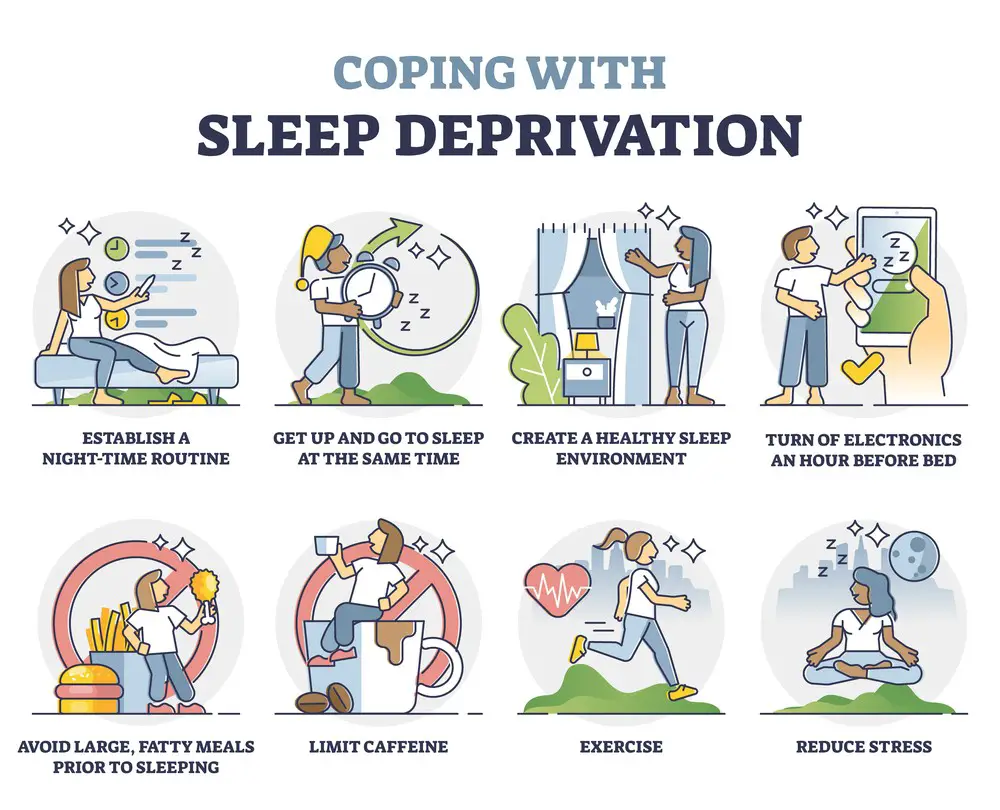
Maximizing sleep quality requires a good sleep environment, good bedtime habits, and finding the best position to sleep in. Factors affecting sleep quality include environmental conditions, lifestyle, stress, anxiety, depression, and physical discomfort from chronic pain or an injury. A poor sleep position can lead to disturbed sleep because of discomfort.
Healthline provides excellent advice on how to address the most common sleep problems with the best position to sleep:
Sleep apnea and snoring – Sleeping on your stomach with a pillow under your pelvis and a thinner pillow for your head works. However, sleeping on your side also reduces sleep apnea symptoms and snoring.
Pregnancy – Sleep on your left side with a body pillow or other pillows for the best support during pregnancy.
Back pain – Sleeping flat on your back with a pillow beneath your knees can help with lower back pain. Suppose you prefer to sleep on your side. You can support your back by hugging a pillow between the knees to align the spine.
Acid reflux – Sleeping on the left side provides the best relief for acid reflux, heartburn, etc.
Neck pain – Sleep on your back or side with the correct pillow to help with neck pain.
Allergy or cold congestion: Sleep on your back, using two pillows to slightly elevate your head to facilitate breathing for congestion from colds and allergies.
Discover the Best Sleeping Position
Discovering the optimal sleeping position is a journey rooted in your own comfort and bodily alignment. Even though sleeping on the stomach is generally not the best position, if you prefer it and it makes you feel more rested, you must ensure you have the proper support.
Begin by experimenting with various positions, including back, side, and stomach sleeping, paying close attention to how each affects your overall comfort and your existing aches or pains.
Investing in supportive mattresses and pillows that promote proper spinal alignment is necessary. Listen to your body’s cues; if a particular position consistently leads to restful sleep and feeling refreshed upon waking, it may be your ideal sleeping position for the best night’s rest.
Remember that individual preferences and physical conditions vary, so what works best for one person may not be suitable for another. Experimentation and attentiveness to your body’s signals are crucial to discovering the best position to sleep.
Recognizing Serious Sleep Issues: When to Seek Professional Help
Getting quality sleep is crucial for both physical and mental health, but sometimes, despite our best efforts, sleep may not come easily or may not be restful. Recognizing when sleep issues are serious and understanding the options for treatment can help you make informed decisions about your health.
Signs You May Have a Serious Sleep Issue
It’s important to recognize the signs that your sleep problems may need professional attention:
- Consistent Difficulty Falling or Staying Asleep: If you regularly take more than 30 minutes to fall asleep or wake up frequently during the night and have trouble going back to sleep, it could be a sign of a sleep disorder.
- Daytime Fatigue or Sleepiness: Feeling excessively tired during the day, despite getting an adequate amount of sleep, can indicate poor sleep quality or a sleep disorder.
- Loud Snoring or Breathing Interruptions: Loud, chronic snoring, or noticeable pauses in breathing during sleep, can be symptoms of sleep apnea, a serious health condition.
- Persistent Pain or Discomfort: Ongoing discomfort or pain during the night that prevents you from sleeping could be linked to your sleep position or an underlying health issue.
- Mental Health Impact: If lack of sleep affects your mood, cognitive abilities, or mental health, professional help may be necessary.
Who Benefits Most from Medication
Appropriate Use of Sleep Medication:
- Short-term Insomnia: For those experiencing transient or short-term insomnia, medication may help reset a sleep schedule.
- Severe Sleep Disorders: In cases of severe disorders like sleep apnea, medication, alongside other treatments like CPAP machines, can be effective.
Advantages of Medication:
- Quick Relief: Medications can provide quick relief for sleep disturbances, helping temporarily stabilize sleep patterns.
- Effective in Severe Cases: They are often effective in severe cases or when immediate intervention is needed.
Disadvantages of Medication:
- Dependency Risk: There is a risk of dependence or tolerance, meaning the effectiveness can decrease over time.
- Side Effects: Sleep medications can have side effects ranging from mild to severe, affecting daytime alertness and overall health.
Who May Need Counseling
Benefits of Counseling for Sleep Issues:
- Cognitive Behavioral Therapy for Insomnia (CBT-I): This structured program helps you identify and replace thoughts and behaviors that cause or worsen sleep problems.
- Stress-Related Sleep Issues: Counseling can be particularly beneficial if your sleep issues are related to anxiety, stress, or depression.
Advantages of Counseling:
- Long-Term Solutions: Provides strategies to manage and potentially resolve the underlying causes of sleep issues.
- No Medication Side Effects: Avoids the risks associated with sleep medications.
Disadvantages of Counseling:
- Time and Commitment: It requires a commitment to regular sessions and applying learned techniques, and results may take time to see.
- Access and Cost: May be expensive or hard to access depending on location and insurance coverage.
Setting Goals and Recognizing Progress

- Set Realistic Sleep Goals: Begin with achievable goals, such as improving bedtime routines or gradually adjusting sleep schedules.
- Monitor and Record Sleep Patterns: Use a sleep diary or a sleep tracking app to monitor sleep quality and duration improvements.
- Celebrate Milestones: Acknowledge improvements in sleep, even small ones, which can motivate continued effort and adherence to sleep strategies.
Bottom Line
Understanding when sleep issues are serious and exploring the appropriate solutions—whether through medication, counseling, or both—can lead to better sleep and improved overall health. It’s important to consult healthcare professionals to choose the right treatment based on your symptoms and conditions. With the right approach, you can enjoy the benefits of restful sleep and a healthier life.
- 7 Ideas to Help You Relax and Unwind on a Family Vacation - April 27, 2025
- How Having Cybersecurity Protection Helps You Relax - April 25, 2025
- 8 Reasons Why Spending Time Outside Calms You Down - April 25, 2025
This site contains affiliate links to products. We will receive a commission for purchases made through these links.

